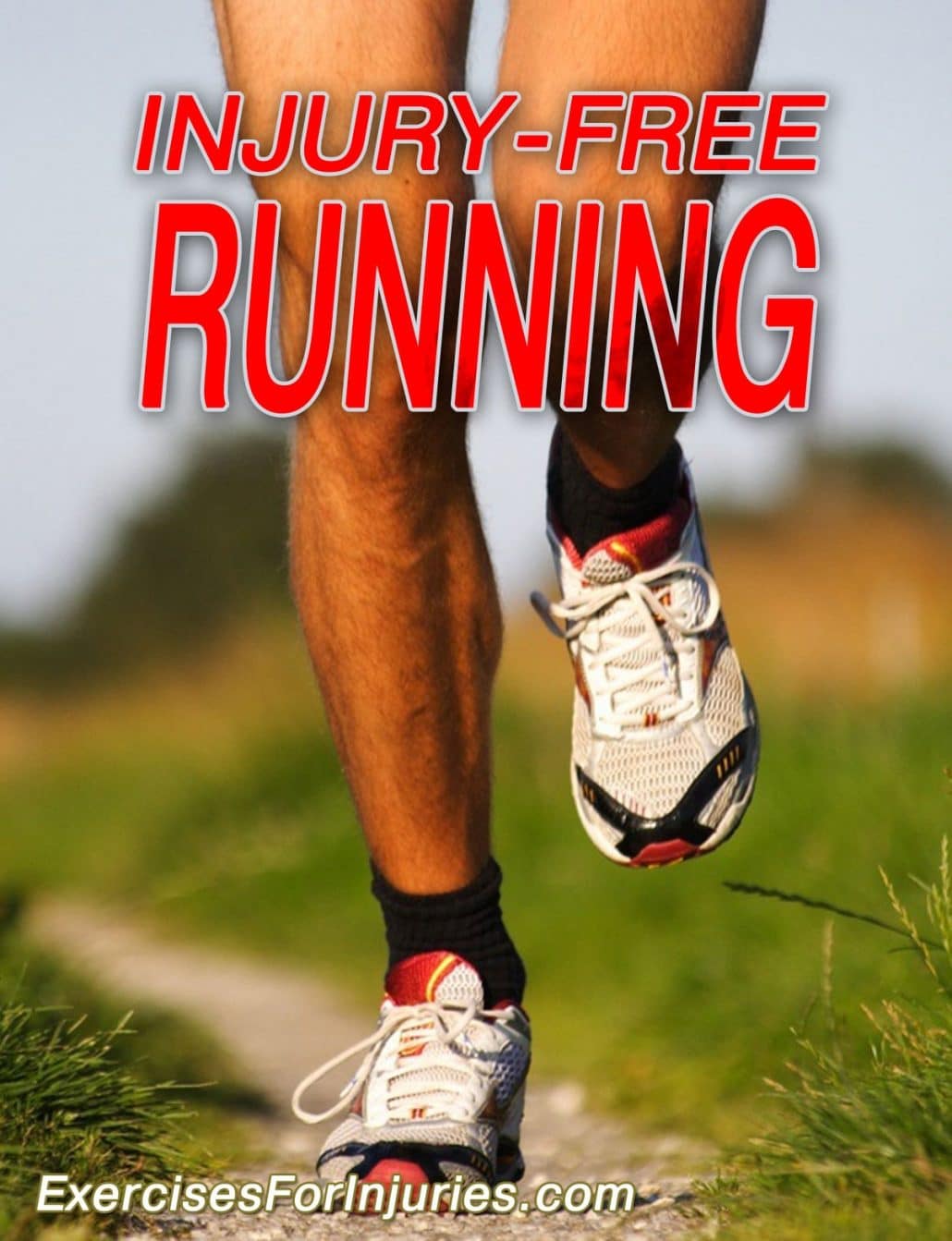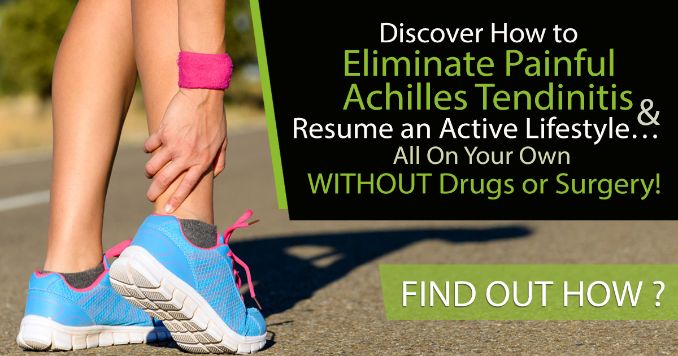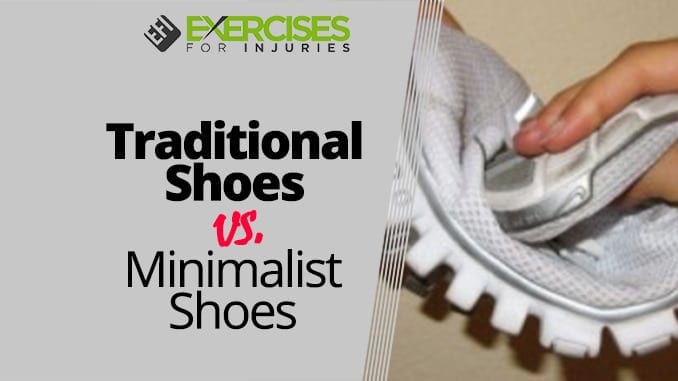
In the last few years, there has been an ongoing debate in the running industry regarding footwear. At one extreme are the barefoot and minimalist running shoe proponents who argue that no shoes, or at most, shoes with minimal structure, are best. On the other end are experts who hold that the traditional thick-soled, cushioned shoes are optimal for injury prevention.
Traditional Running Shoes
Until the 1970’s running shoes were manufactured with flat, thin soles. Indeed the current growth in popularity of minimalist shoes can be seen as a case of old becoming new again.
In the late 70s and 80s, running shoe construction began incorporating thicker soles with elevated heels. The rationale for adding cushioning in the midsole and motion control features in running shoes was to absorb impact forces and control movement, specifically pronation, of the foot.
Cushioning materials in shoes increase overall leg stiffness (Bishop et al. 2006). Some leg stiffness is beneficial to running well, but excessive leg stiffness may be a factor for increased risk of injury (Hewett et al. 2004).
A review study by Richards et al. in 2008 concluded that prescribing “pronation control, elevated cushioned heel (PCECH) running shoes to distance runners is not evidence-based.”
Additionally, a study by Ryan et al. in 2010 showed that motion-control shoes had the highest incidence of injury in their research group, regardless of whether the wearer had highly pronated feet.
Traditional shoes are the most common type of footwear. They are an excellent choice for casual outfits and everyday wear. Traditionally, these shoes have high-top collars, flat soles, and laces. Traditional shoes have been popular for decades and have been around since the days of surplus clothing. Despite being a bit dated, they are still an incredibly stylish choice for men.
The last thirty years of shoe construction have not achieved what it set out to do. Injury rates in runners today remain as high as ever.
Minimalist Shoes
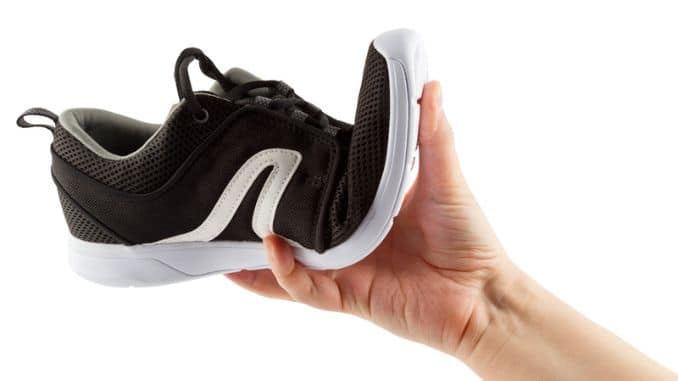
Since Christopher MacDougall published Born to Run in 2009, there has been tremendous growth in the number and styles of so-called minimalist shoes. Virtually every major shoe manufacturer and several smaller upstarts now have minimalist shoes.
These shoes were designed to mimic how the foot functions barefoot. Generally, running barefoot will cause a runner to land with a flatter foot (De Wit et al. 2000).
In addition, Lieberman et al. (2010) found that if a barefoot runner lands with a forefoot landing, there is no impact transient (a very rapid rise in impact forces) compared to landing heel first in shoes. However, it should be noted that Lieberman and his group do not claim that heel striking in and of itself causes injury.
Minimalist shoes share the following characteristics:
- They’re lightweight.
- They have a flexible upper and sole.
- They incorporate less or no cushioning material in the midsole.
There is a minor difference between the heel and forefoot height (also known as heel drop). Traditional shoes have a heel drop of 11 – 15 mm, while minimalist shoes have a heel drop under 10 mm.
Traditional Shoe
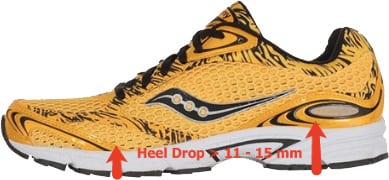 | 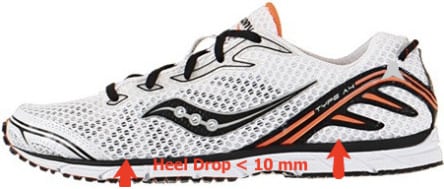
Minimalist Shoe Heel Drop |
Within the minimalist shoe category are three main sub-categories:
Barefoot-style shoe. This shoe has a minimal structure, no cushioning, a zero-drop (heel and forefoot levels), and the thinnest sole. Examples include the Vibram Five-Fingers and the Merrell Trail Glove.
Minimalist shoe. These shoes have some cushioning in their midsole, slight or no heel drop, and a wide forefoot allowing the toes to be splayed. Examples include the Altra brand shoes.
Transition shoe. These shoes are similar to traditional running shoes but are lighter, more flexible, and have a lower heel drop[²]. Examples include the Nike Free, Saucony Kinvara, and Brooks Pure models.
Take-Home Advice
Currently, neither the minimalist nor the traditional side can conclusively say their method of shoe construction is superior regarding injury prevention.
As a coach, I think most runners could benefit from some amount of running in minimalist shoes. However, a runner must take caution in how quickly and how much they transition away from a regular, traditional running shoe.
There will be a wide range of individual variability in adapting to a more minimalist running style.
The choice of running shoe style needs to be part of a well-thought-out training program. If a runner has been relatively injury-free and is content with their performance in traditional shoes, I see no reason to push them into minimalist shoes.
On the other hand, if a runner has had repeated injuries and setbacks with traditional shoes, it may be time to transition to a more minimalist shoe.
My advice would be to first look for a shoe with a wide toe-box to accommodate splaying of the toes during running. This will facilitate the proper function of the big toe. Less cushioning and more flexibility are other characteristics to look for. Lighter shoes will help improve the running execonomy.
I would be more cautious regarding heel drops. Going to a zero-drop shoe for many runners will put too much strain on the Achilles tendon and lower posterior chain. Look for a 4 – 8 mm heel drop initially.
Use the shoes indoors during strength training first, then try them for short runs and running drills. Build the mileage gradually. Some runners may adapt to where they can run with minimalist shoes all the time. Others may only be able to progress to using them for shorter runs.
But remember that traditional or minimalist shoes are not a solution by themselves. Runners must incorporate strength training[¹], multi-planar mobility, and technique exercises into an individualized conditioning program that includes adequate recovery and sound nutrition.
Vancouver Running Symposium

If you’re interested in learning more about this topic and will be in the Vancouver area on January 26, come to the Vancouver Running Symposium.
An expert panel consisting of a sports medicine doctor, physiotherapist, pedorthist, coach, shoe designer, and podiatrist will be debating the role of traditional shoes vs. minimalist shoes.
Full details and the RSVP form can be found at Vancouver Running Symposium.
Curb Ivanic, MS, CSCS, is a Vancouver-based trainer, running coach, and experienced ultrarunner. He is the Core Running system creator and has coached hundreds of runners from beginner to elite over the last 12 years. You can contact him through CoreRunning.com.
Big thanks to Curb; that was great.
I recommend that you do what you can to make the Vancouver Running Symposium. It looks great.
If you are looking for resources to help you run injury-free, you can check out:
Here are a few other articles on running that may interest you:
References:
- Suchomel, T. J., Nimphius, S., Bellon, C. R., & Stone, M. H. (2018). The importance of muscular strength: training considerations. Sports Medicine, 48(4), 765–785. https://doi.org/10.1007/s40279-018-0862-z
- Duan, W., Liu, J., Liao, K., & Ma, S. (2022). Experimental study of slamming pressure for a trimaran section with different drop heights and heel angles. Ocean Engineering, 263, 112400. https://doi.org/10.1016/j.oceaneng.2022.112400

